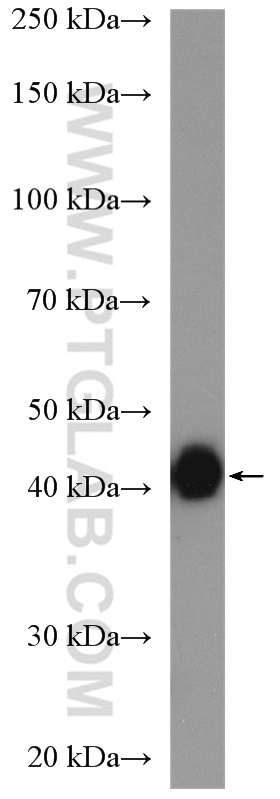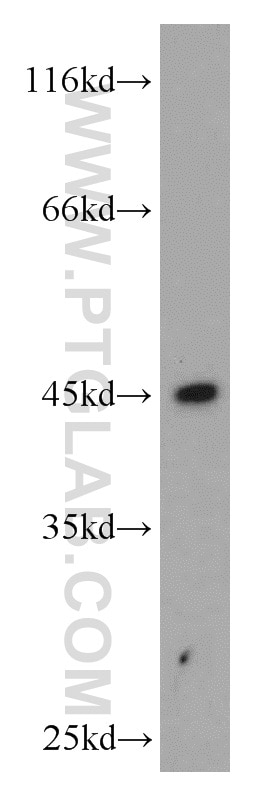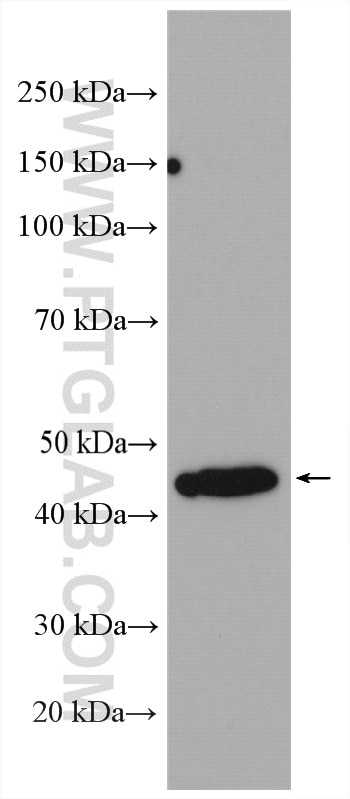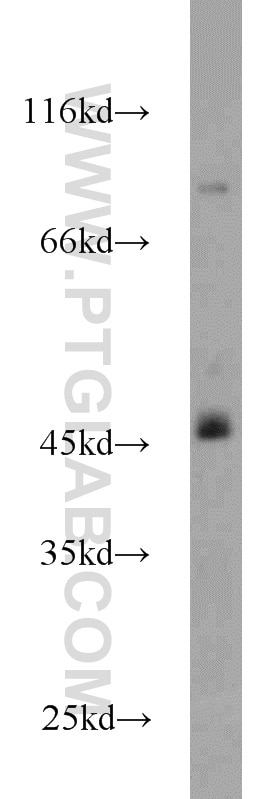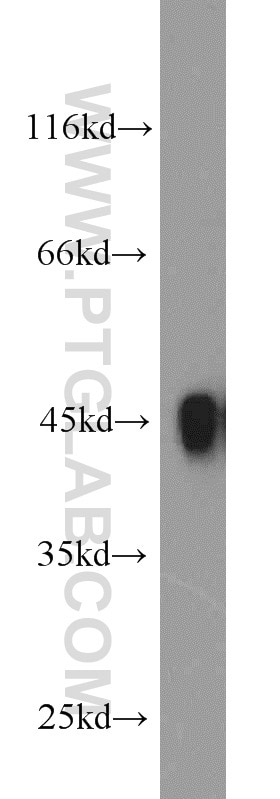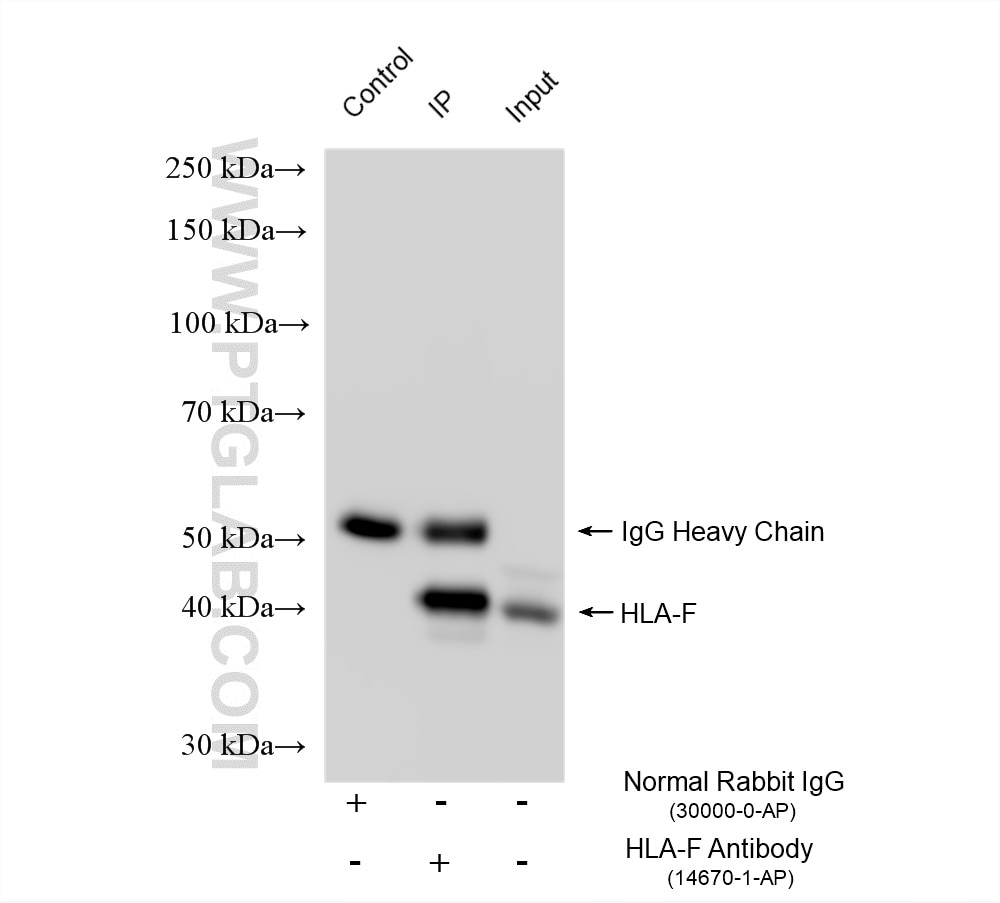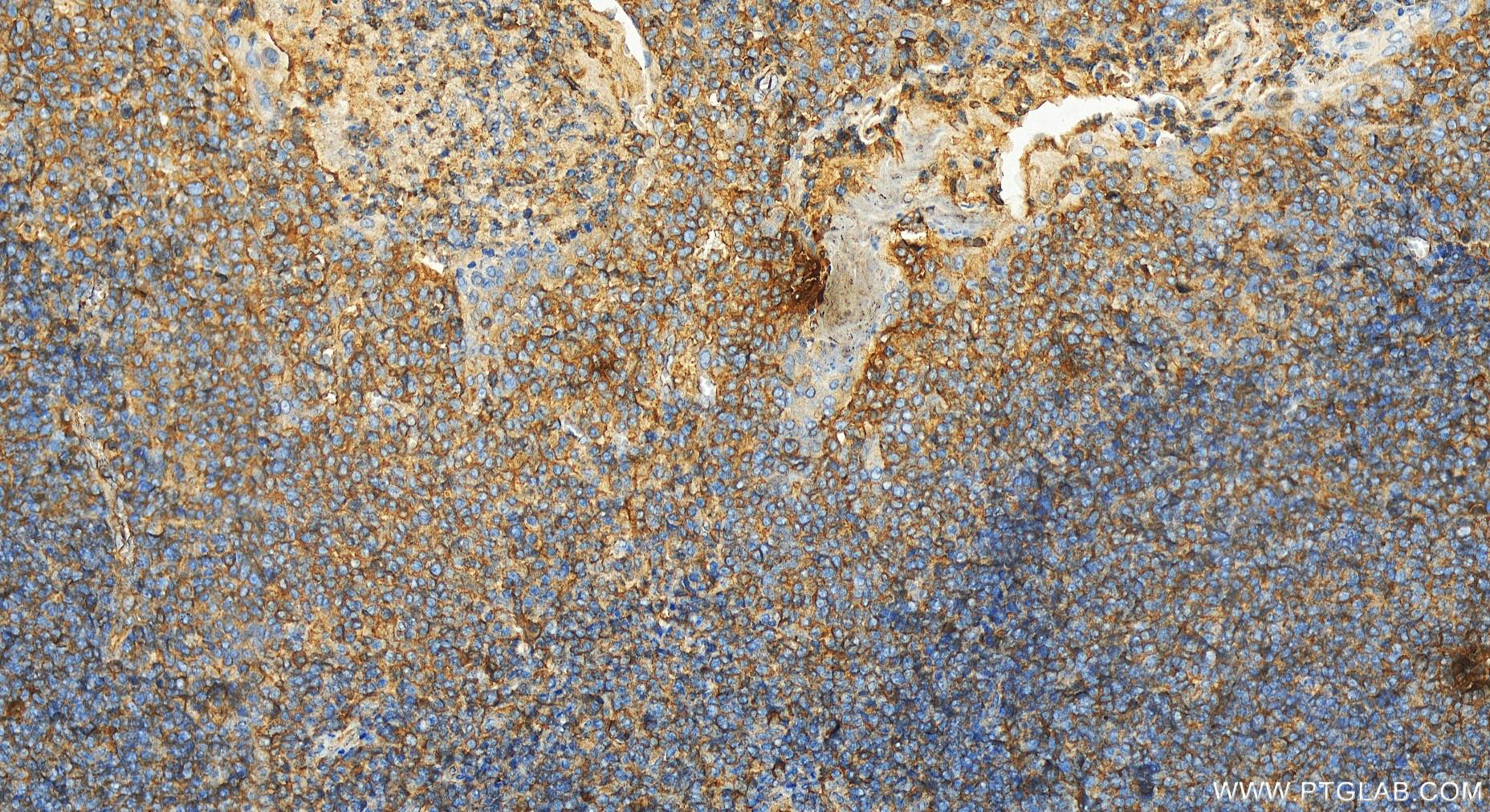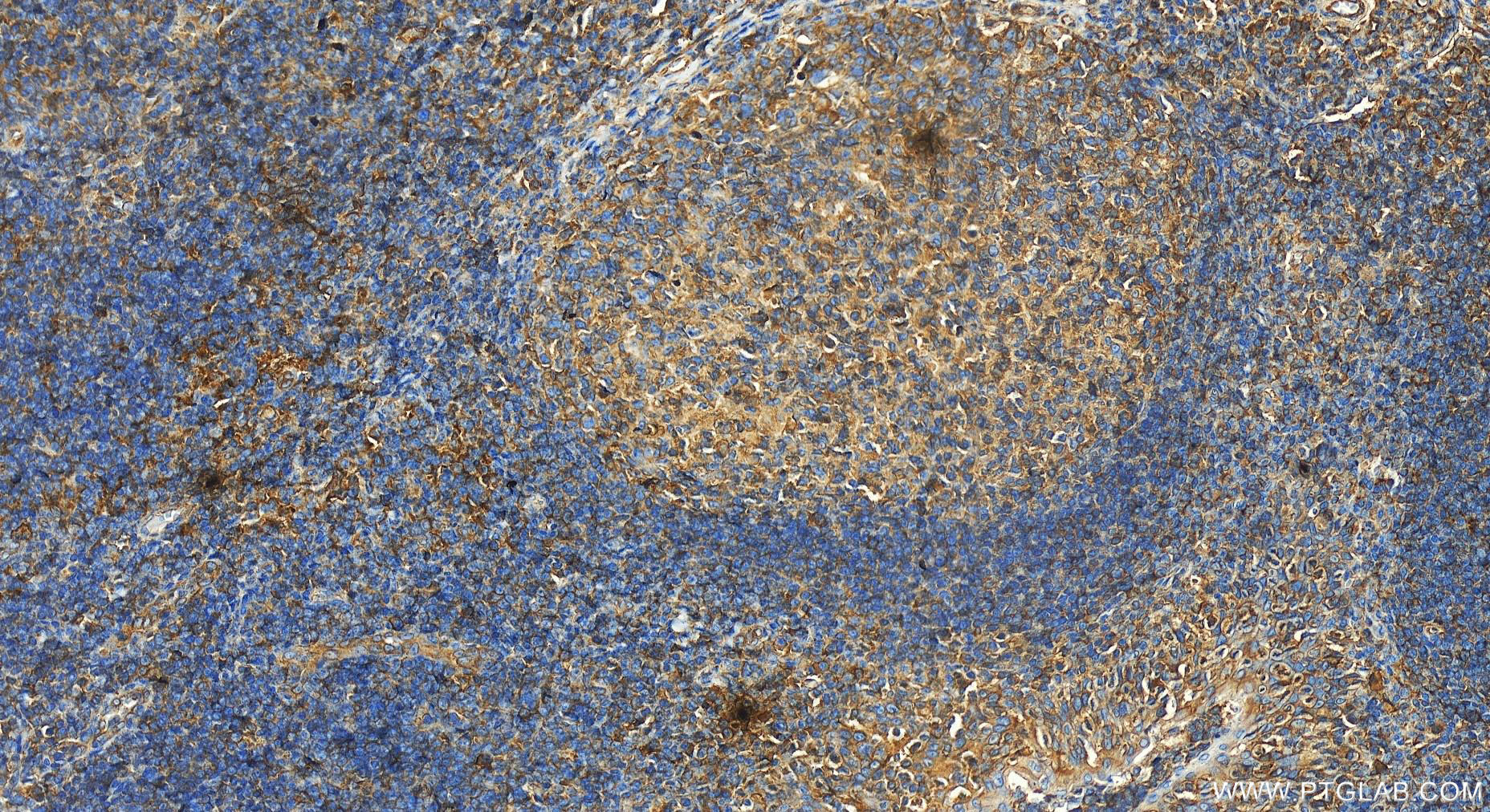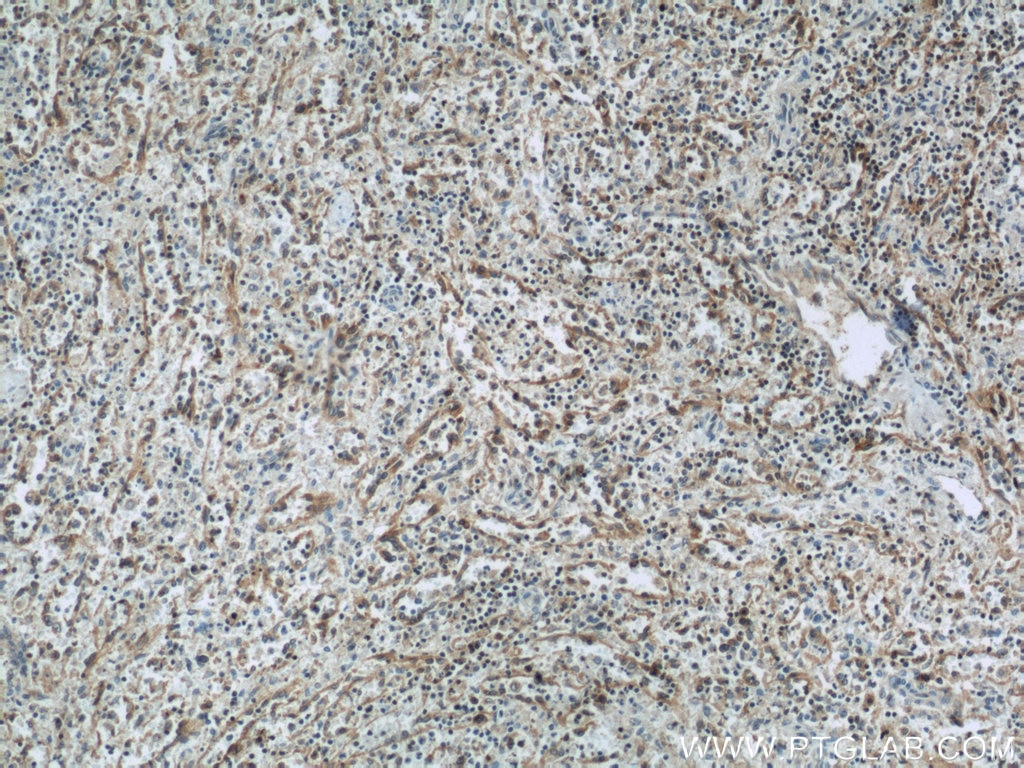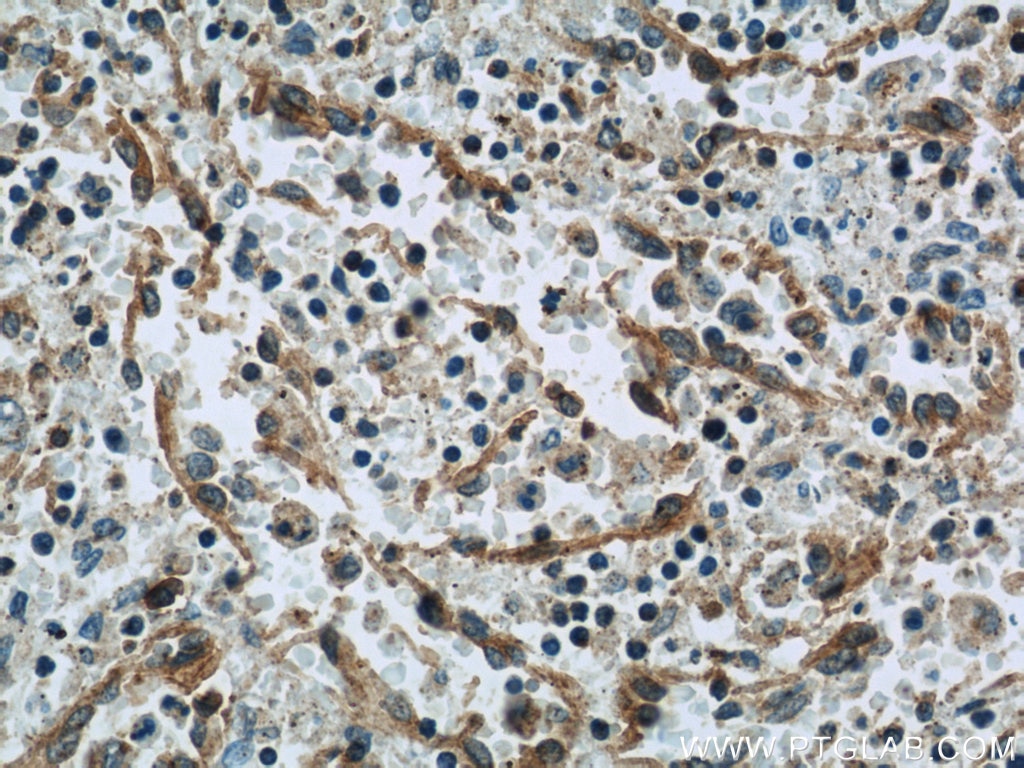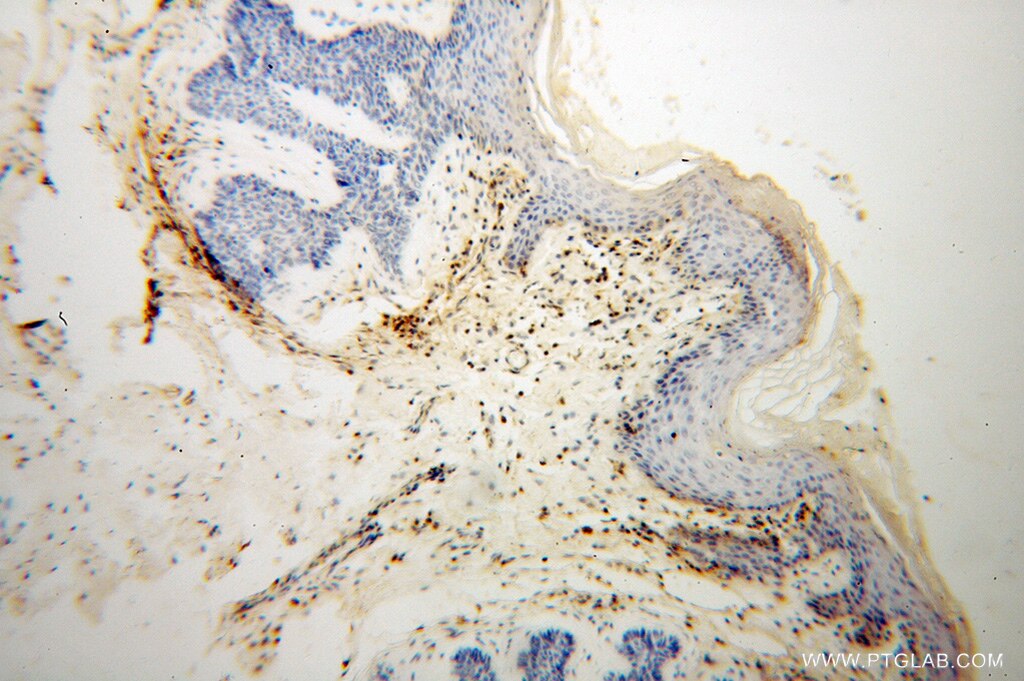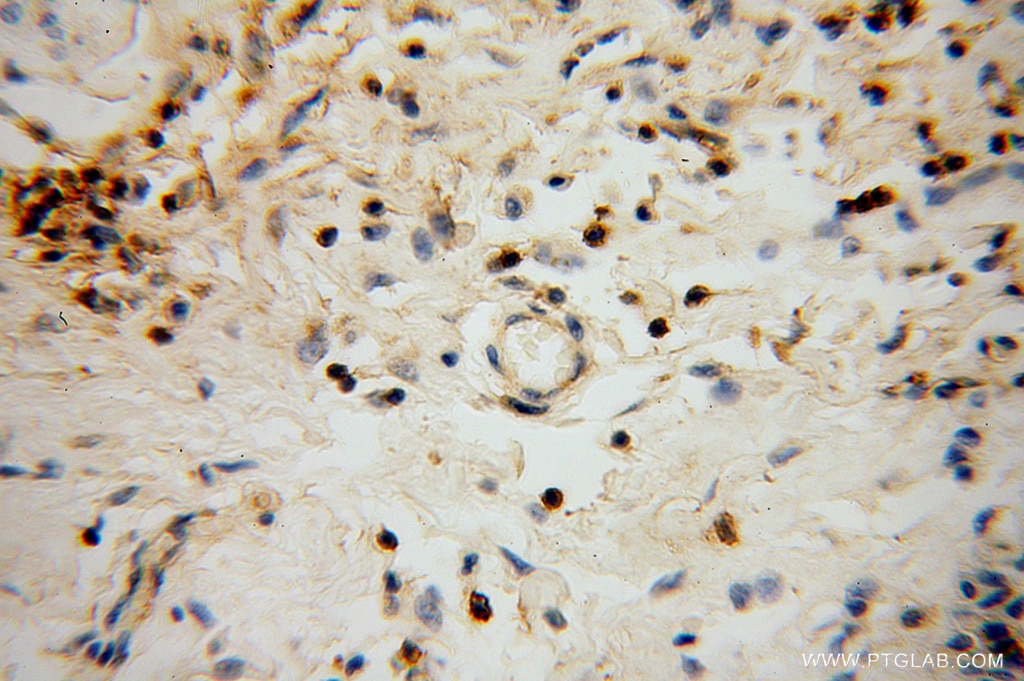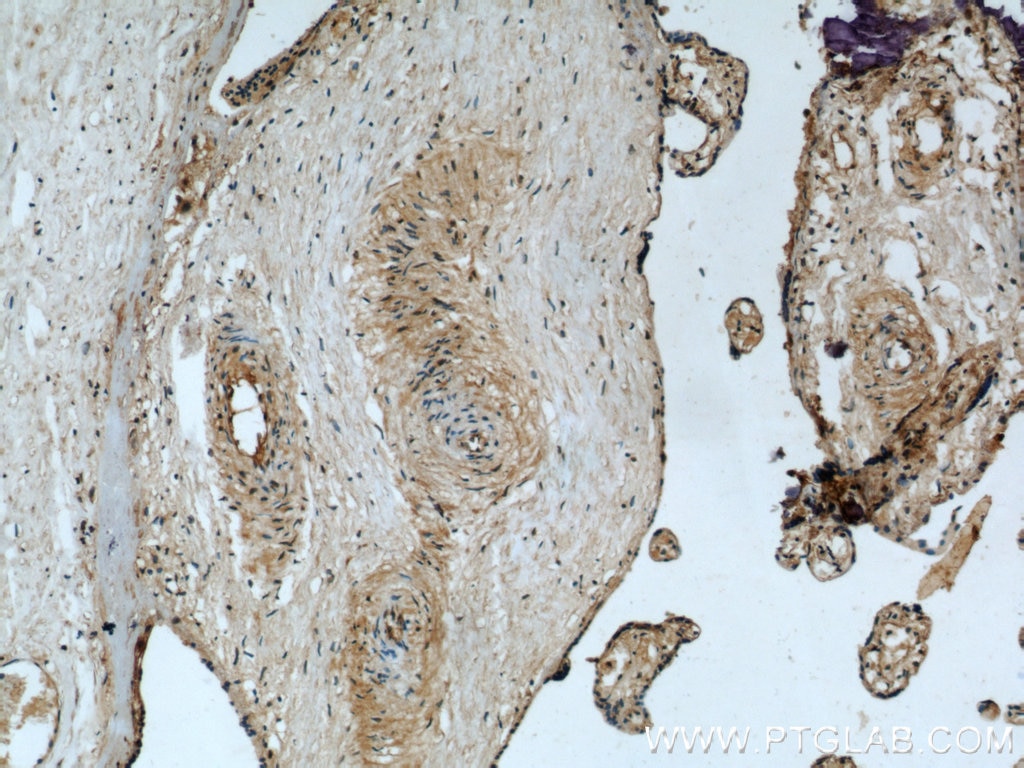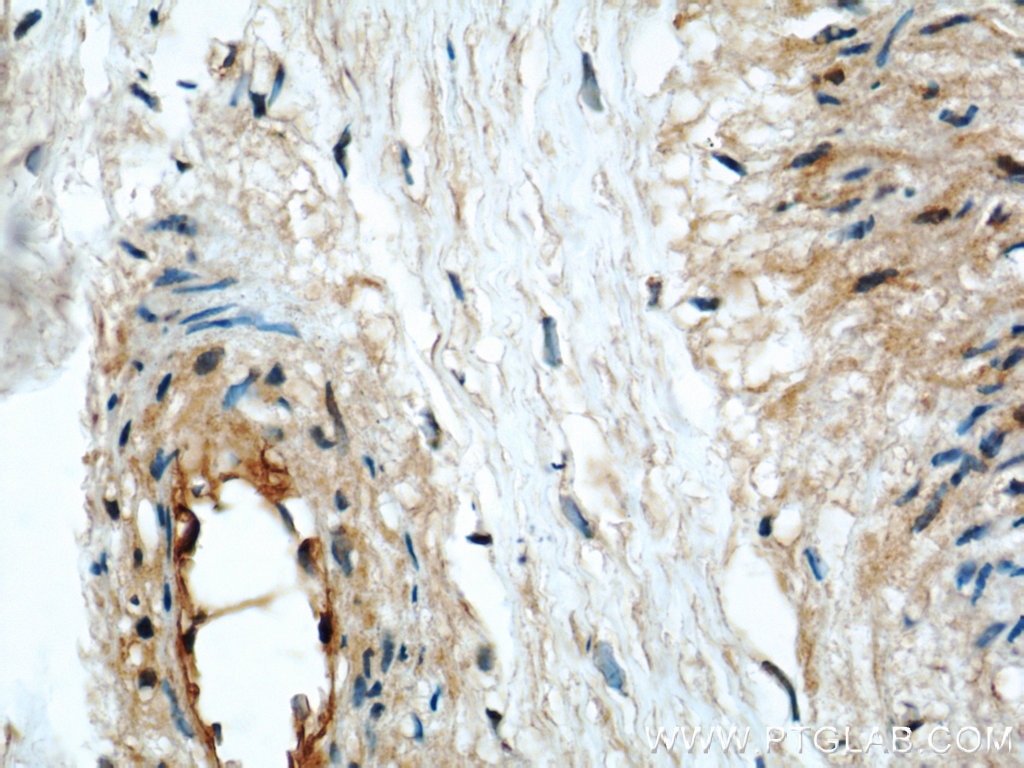Tested Applications
| Positive WB detected in | Raji cells, human placenta tissue, human spleen tissue, A431 cells |
| Positive IP detected in | A431 cells |
| Positive IHC detected in | human tonsillitis tissue, human placenta tissue, human skin cancer tissue, human spleen tissue Note: suggested antigen retrieval with TE buffer pH 9.0; (*) Alternatively, antigen retrieval may be performed with citrate buffer pH 6.0 |
Recommended dilution
| Application | Dilution |
|---|---|
| Western Blot (WB) | WB : 1:1000-1:4000 |
| Immunoprecipitation (IP) | IP : 0.5-4.0 ug for 1.0-3.0 mg of total protein lysate |
| Immunohistochemistry (IHC) | IHC : 1:200-1:1200 |
| It is recommended that this reagent should be titrated in each testing system to obtain optimal results. | |
| Sample-dependent, Check data in validation data gallery. | |
Published Applications
| KD/KO | See 1 publications below |
| WB | See 2 publications below |
| IHC | See 7 publications below |
| IF | See 1 publications below |
Product Information
14670-1-AP targets HLA-F in WB, IHC, IF, IP, ELISA applications and shows reactivity with human samples.
| Tested Reactivity | human |
| Cited Reactivity | human, mouse, rat |
| Host / Isotype | Rabbit / IgG |
| Class | Polyclonal |
| Type | Antibody |
| Immunogen |
CatNo: Ag6335 Product name: Recombinant human HLA-F protein Source: e coli.-derived, PGEX-4T Tag: GST Domain: 21-298 aa of BC062991 Sequence: AGSHSLRYFSTAVSRPGRGEPRYIAVEYVDDTQFLRFDSDAAIPRMEPREPWVEQEGPQYWEWTTGYAKANAQTDRVALRNLLRRYNQSEAGSHTLQGMNGCDMGPDGRLLRGYHQHAYDGKDYISLNEDLRSWTAADTVAQITQRFYEAEEYAEEFRTYLEGECLELLRRYLENGKETLQRADPPKAHVAHHPISDHEATLRCWALGFYPAEITLTWQRDGEEQTQDTELVETRPAGDGTFQKWAAVVVPSGEEQRYTCHVQHEGLPQPLILRWEQS Predict reactive species |
| Full Name | major histocompatibility complex, class I, F |
| Calculated Molecular Weight | 39 kDa |
| Observed Molecular Weight | 40-45 kDa |
| GenBank Accession Number | BC062991 |
| Gene Symbol | HLA-F |
| Gene ID (NCBI) | 3134 |
| RRID | AB_1519280 |
| Conjugate | Unconjugated |
| Form | Liquid |
| Purification Method | Antigen affinity purification |
| UNIPROT ID | P30511 |
| Storage Buffer | PBS with 0.02% sodium azide and 50% glycerol, pH 7.3. |
| Storage Conditions | Store at -20°C. Stable for one year after shipment. Aliquoting is unnecessary for -20oC storage. 20ul sizes contain 0.1% BSA. |
Background Information
Human major histocompatibility complex (MHC) antigens, also referred to as human leukocyte antigens (HLA), are encoded by genes located on the short arm of chromosome 6 (6p21.3). There are two classes of HLA antigens: class I and class II. This class I molecules are membrane glycoproteins composed of a heavy (alpha) chain which is encoded by a HLA class I gene, and β2-microglobulin light (beta) chain. The most extensively characterized members of the HLA class I gene family are the genes encoding the major transplantation antigenes, HLA-A, B and C. HLA-F is a non-classical MHC class I molecule. (PMID: 667938; 3375250; 2249951)
Protocols
| Product Specific Protocols | |
|---|---|
| IHC protocol for HLA-F antibody 14670-1-AP | Download protocol |
| IP protocol for HLA-F antibody 14670-1-AP | Download protocol |
| WB protocol for HLA-F antibody 14670-1-AP | Download protocol |
| Standard Protocols | |
|---|---|
| Click here to view our Standard Protocols |
Publications
| Species | Application | Title |
|---|---|---|
Kidney Int Upregulation of HLA-F expression by BK polyomavirus infection induces immune recognition by KIR3DS1-positive natural killer cells. | ||
Int J Cancer Alteration of HLA-F and HLA I antigen expression in the tumor is associated with survival in patients with esophageal squamous cell carcinoma. | ||
J Immunol Immune Modifications in Fetal Membranes Overlying the Cervix Precede Parturition in Humans. | ||
Int J Biol Sci Targeting HLA-F suppresses the proliferation of glioma cells via a reduction in hexokinase 2-dependent glycolysis.
| ||
Lung Cancer HLA-F expression is a prognostic factor in patients with non-small-cell lung cancer. | ||
Oncol Lett Lesion human leukocyte antigen-F expression is associated with a poor prognosis in patients with hepatocellular carcinoma. |

